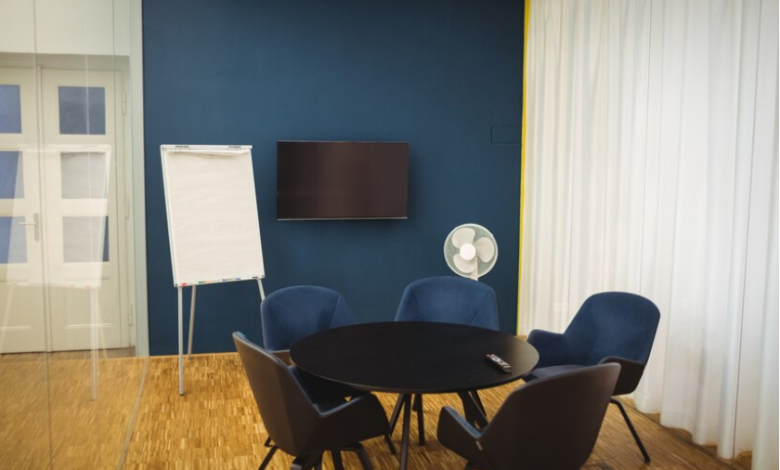Meeting Rooms for Conferences: What to Look For

Selecting the right meeting room for a conference is an essential part of planning a successful event. Whether you’re organizing a corporate seminar, a training workshop, or a product launch. The space in which the event takes place can significantly impact its success. A well-equipped and thoughtfully designed meeting room can enhance the flow of the event. Ensuring that attendees remain engaged and that presentations go smoothly.
On the other hand, a poorly chosen space can lead to distractions, technical difficulties, and an overall less effective gathering. This article explores the key elements to look for when choosing a meeting room for conferences. Ensuring that your event runs efficiently and leaves a lasting impression.
- Location and Accessibility
The location of the meeting room is a critical factor, especially for larger conferences that attract attendees from various locations. A centrally located venue with good transport links is crucial for ensuring that participants can arrive easily. Whether by car, public transport, or even by foot.
When selecting a meeting room for a conference, it’s important to consider how accessible the venue is for everyone involved, including those flying in from other cities. Choosing a venue that is close to major transport hubs like airports or train stations can simplify travel arrangements for attendees.
In addition to transport, accessibility also refers to how easily people with physical disabilities can access the venue. Ensuring the building has ramps, elevators, and other facilities that cater to attendees with disabilities is not only considerate. But often legally required. Accessibility impacts the overall experience and comfort of the event. So it’s essential to select a meeting room that accommodates everyone.
- Capacity and Layout Flexibility
Conferences vary widely in size, so the capacity of the meeting room is an important consideration. The room must be large enough to comfortably fit all attendees, with sufficient seating and space for networking or breakout sessions.
Overcrowded rooms can make participants feel uncomfortable. While spaces that are too large for the audience can create a sense of disconnection. Therefore, selecting a room that fits the expected number of attendees is crucial for maintaining the right atmosphere during the event.
Another key factor is the flexibility of the room layout. The best meeting rooms in Hyderabad for conferences offer versatile layouts that can be adapted to different types of sessions. Whether you need theater-style seating for a keynote address. Round tables for group discussions, or a classroom setup for a training session, having the ability to rearrange the space to suit your needs is invaluable. Some venues may also offer movable partitions that allow you to expand or reduce the room size as needed.
- Technology and Equipment
In the modern business world, the importance of reliable technology cannot be overstated. Conferences often involve presentations, video conferencing, or live demonstrations, all of which require advanced technical support.
A top-tier meeting room will be equipped with high-quality audiovisual (AV) equipment, including projectors, screens, microphones, and speakers. To ensure that presentations are clear and engaging for all attendees.
The availability of reliable high-speed internet is also crucial, particularly for conferences that involve remote participants or require real-time collaboration. Meeting rooms with integrated tech support can help ensure that the conference runs smoothly, with technicians on hand to assist with any potential technical difficulties that arise during the event. It’s worth confirming with the venue what technology is included in the booking and whether any additional equipment or support will be required to meet your conference needs.
- Comfort and Ambiance
A conference can last several hours, sometimes even days, making the comfort of the meeting room an important factor to consider. Comfortable seating, adequate lighting, and a good temperature control system all contribute to the overall experience of attendees.
Uncomfortable seating or poor lighting can distract participants from the content being delivered, while an overly hot or cold room can make it difficult to focus.
The ambiance of the room also matters. Natural light, pleasant décor, and good acoustics all play a role in creating a welcoming environment. While the primary focus of a conference is on the content being delivered, the atmosphere of the room can greatly influence the mood and energy of the participants. Spaces that are too sterile or dimly lit may not be conducive to productive discussions, while rooms with large windows, stylish furnishings, and a thoughtful design can enhance engagement.
- Catering and Breakout Areas
Many conferences run for extended periods, often spanning full days. It’s important to consider the catering options available at the venue. Having access to refreshments like coffee, tea, and snacks throughout the day can keep attendees energized and engaged.
Additionally, if the conference includes a lunch break, finding a venue that offers in-house catering or is close to quality restaurants can make the logistics of meal planning easier.
Breakout areas are also a valuable feature to look for when selecting a meeting room for a conference. These are spaces where attendees can step away from the main room to relax, network, or collaborate in smaller groups.
Breakout areas provide a more informal setting for conversations, allowing participants to build connections and engage in more personal discussions.
Whether it’s a lounge area, outdoor space, or smaller meeting rooms within the venue, having these additional areas can enhance the overall conference experience.
- Costs and Flexibility in Booking
While finding the perfect meeting room is important, staying within budget is equally critical. It’s important to get a clear understanding of the venue’s pricing structure. Including any hidden fees for amenities like internet access, AV equipment, or extended hours.
Some venues may offer package deals that include catering, equipment, and room setup. Which can be more cost-effective than booking everything separately.
Additionally, it’s worth considering the flexibility of the booking terms. Conferences often involve last-minute changes, whether it’s an increase in attendee numbers or adjustments to the schedule. Choosing a venue that allows for flexible booking and cancellation policies can provide peace of mind. Ensuring that you won’t face steep penalties if adjustments are needed.
Conclusion
Selecting the right meeting room for a conference involves balancing several important factors, from location and accessibility to technology and comfort.
A well-chosen venue not only enhances the overall experience for attendees, but also ensures that the event runs smoothly, with minimal distractions or logistical issues.
By focusing on key elements like capacity, layout flexibility, technology, and comfort, businesses can ensure that their conference is both professional and productive.

